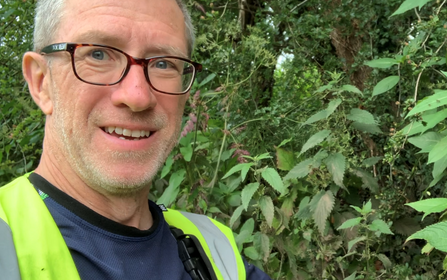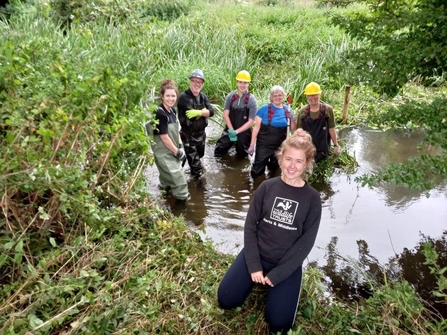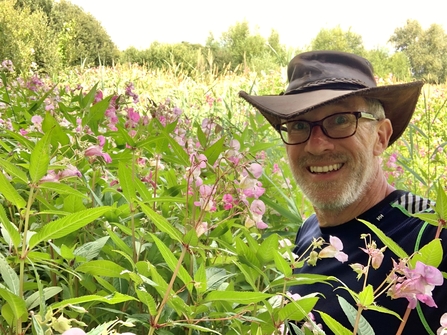Our work protecting chalk rivers could not be done without the support of an army of volunteers and a host of partner organisations. Here, Peter White, gives us a flavour of the work and what it feels like to be involved in river restoration work across the region.
“Since 2019 I’ve been involved in several practical sessions as a Living Rivers volunteer to restore a more natural feel to sections of rivers where past widening, straightening or dredging has stripped them of the variations in depth and flow that are so valuable as habitats.
This means working in the river, placing large logs or bundles of cut material into the channel to create brash build-outs or areas of large woody debris (simulating fallen trees) that reintroduces those variations in the flow. These are fixed in place by ramming posts into the river bed, then securing the material to them with (minimal!) wire and staples. Areas of clear gravel develop where the water flows faster, and nooks and crannies in the slower sections provide shelter for fish and invertebrates and let plants take hold and re-establish. Often these sessions are run with local community involvement to help them get to love their river and demonstrate the importance of rivers being less ‘tidy’. It can be physically hard work, but it’s good fun and very rewarding.




